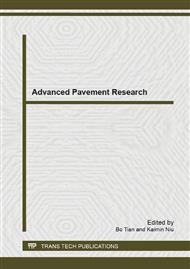p.90
p.97
p.105
p.110
p.116
p.124
p.133
p.141
p.147
A Study of the Capability for Fire Resistance of Polypropylene Fibre Concrete
Abstract:
The purpose of this paper is to examine the effect of various polypropylene fibre additions (length and content) to concrete on compressive strength and explosive spalling when subjected to high temperatures, which simulate the building or tunnel fires. The experimental results show that the compressive strength of polypropylene fiber concrete (PFC) and plain concrete decreases with increasing temperature. Fibre content in a certain range has a small effect on the compressive strength of the concrete, therefore the polypropylene (PP) fibers has a great influence on the anti-spalling behavior of concrete under fire loading to ensure the integrity of the structure. Keywords: concrete, polypropylene fibre, high temperature, compressive strength, spalling
Info:
Periodical:
Pages:
116-123
Citation:
Online since:
December 2013
Authors:
Keywords:
Price:
Сopyright:
© 2014 Trans Tech Publications Ltd. All Rights Reserved
Share:
Citation:


